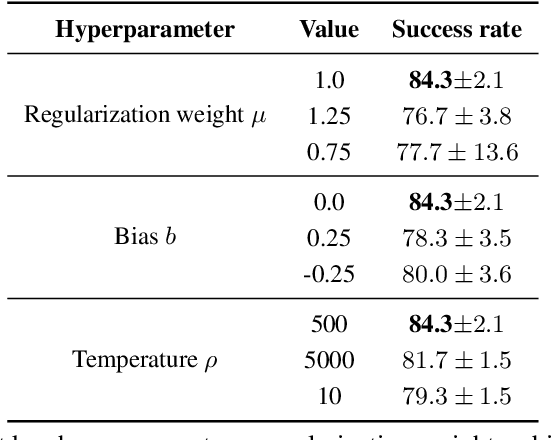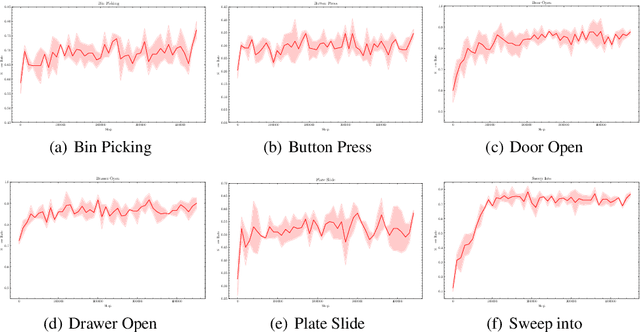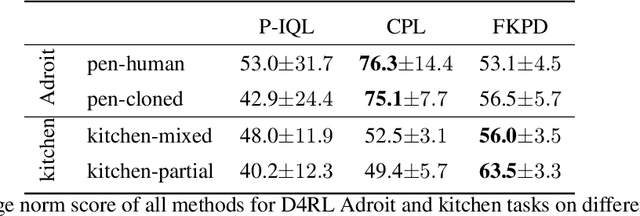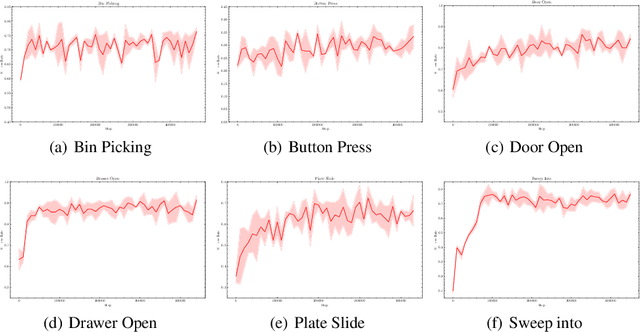Jiyuan Shi
Humanoid Whole-Body Locomotion on Narrow Terrain via Dynamic Balance and Reinforcement Learning
Feb 24, 2025Abstract:Humans possess delicate dynamic balance mechanisms that enable them to maintain stability across diverse terrains and under extreme conditions. However, despite significant advances recently, existing locomotion algorithms for humanoid robots are still struggle to traverse extreme environments, especially in cases that lack external perception (e.g., vision or LiDAR). This is because current methods often rely on gait-based or perception-condition rewards, lacking effective mechanisms to handle unobservable obstacles and sudden balance loss. To address this challenge, we propose a novel whole-body locomotion algorithm based on dynamic balance and Reinforcement Learning (RL) that enables humanoid robots to traverse extreme terrains, particularly narrow pathways and unexpected obstacles, using only proprioception. Specifically, we introduce a dynamic balance mechanism by leveraging an extended measure of Zero-Moment Point (ZMP)-driven rewards and task-driven rewards in a whole-body actor-critic framework, aiming to achieve coordinated actions of the upper and lower limbs for robust locomotion. Experiments conducted on a full-sized Unitree H1-2 robot verify the ability of our method to maintain balance on extremely narrow terrains and under external disturbances, demonstrating its effectiveness in enhancing the robot's adaptability to complex environments. The videos are given at https://whole-body-loco.github.io.
Forward KL Regularized Preference Optimization for Aligning Diffusion Policies
Sep 09, 2024



Abstract:Diffusion models have achieved remarkable success in sequential decision-making by leveraging the highly expressive model capabilities in policy learning. A central problem for learning diffusion policies is to align the policy output with human intents in various tasks. To achieve this, previous methods conduct return-conditioned policy generation or Reinforcement Learning (RL)-based policy optimization, while they both rely on pre-defined reward functions. In this work, we propose a novel framework, Forward KL regularized Preference optimization for aligning Diffusion policies, to align the diffusion policy with preferences directly. We first train a diffusion policy from the offline dataset without considering the preference, and then align the policy to the preference data via direct preference optimization. During the alignment phase, we formulate direct preference learning in a diffusion policy, where the forward KL regularization is employed in preference optimization to avoid generating out-of-distribution actions. We conduct extensive experiments for MetaWorld manipulation and D4RL tasks. The results show our method exhibits superior alignment with preferences and outperforms previous state-of-the-art algorithms.
Robust Quadrupedal Locomotion via Risk-Averse Policy Learning
Sep 01, 2023Abstract:The robustness of legged locomotion is crucial for quadrupedal robots in challenging terrains. Recently, Reinforcement Learning (RL) has shown promising results in legged locomotion and various methods try to integrate privileged distillation, scene modeling, and external sensors to improve the generalization and robustness of locomotion policies. However, these methods are hard to handle uncertain scenarios such as abrupt terrain changes or unexpected external forces. In this paper, we consider a novel risk-sensitive perspective to enhance the robustness of legged locomotion. Specifically, we employ a distributional value function learned by quantile regression to model the aleatoric uncertainty of environments, and perform risk-averse policy learning by optimizing the worst-case scenarios via a risk distortion measure. Extensive experiments in both simulation environments and a real Aliengo robot demonstrate that our method is efficient in handling various external disturbances, and the resulting policy exhibits improved robustness in harsh and uncertain situations in legged locomotion. Videos are available at https://risk-averse-locomotion.github.io/.
 Add to Chrome
Add to Chrome Add to Firefox
Add to Firefox Add to Edge
Add to Edge